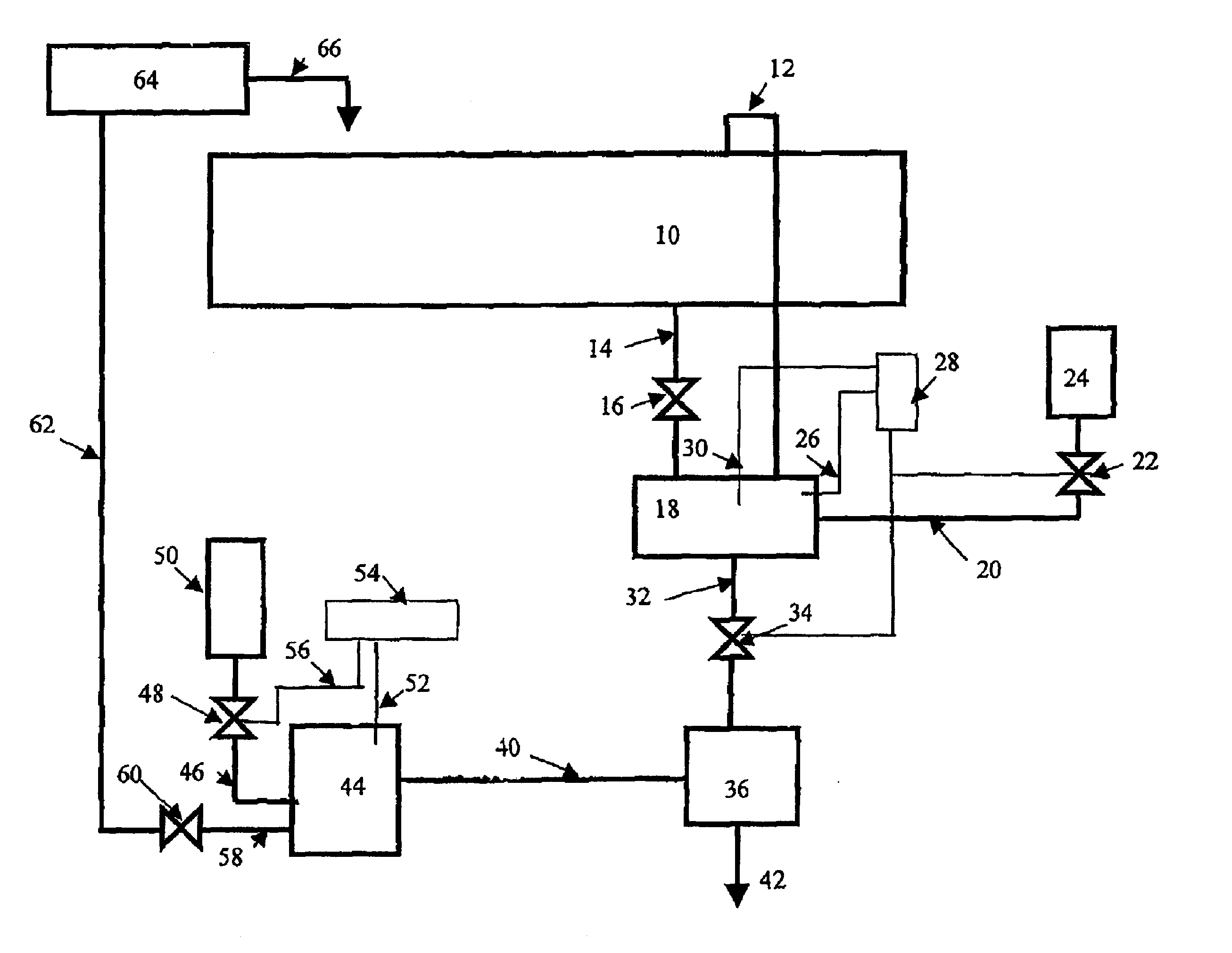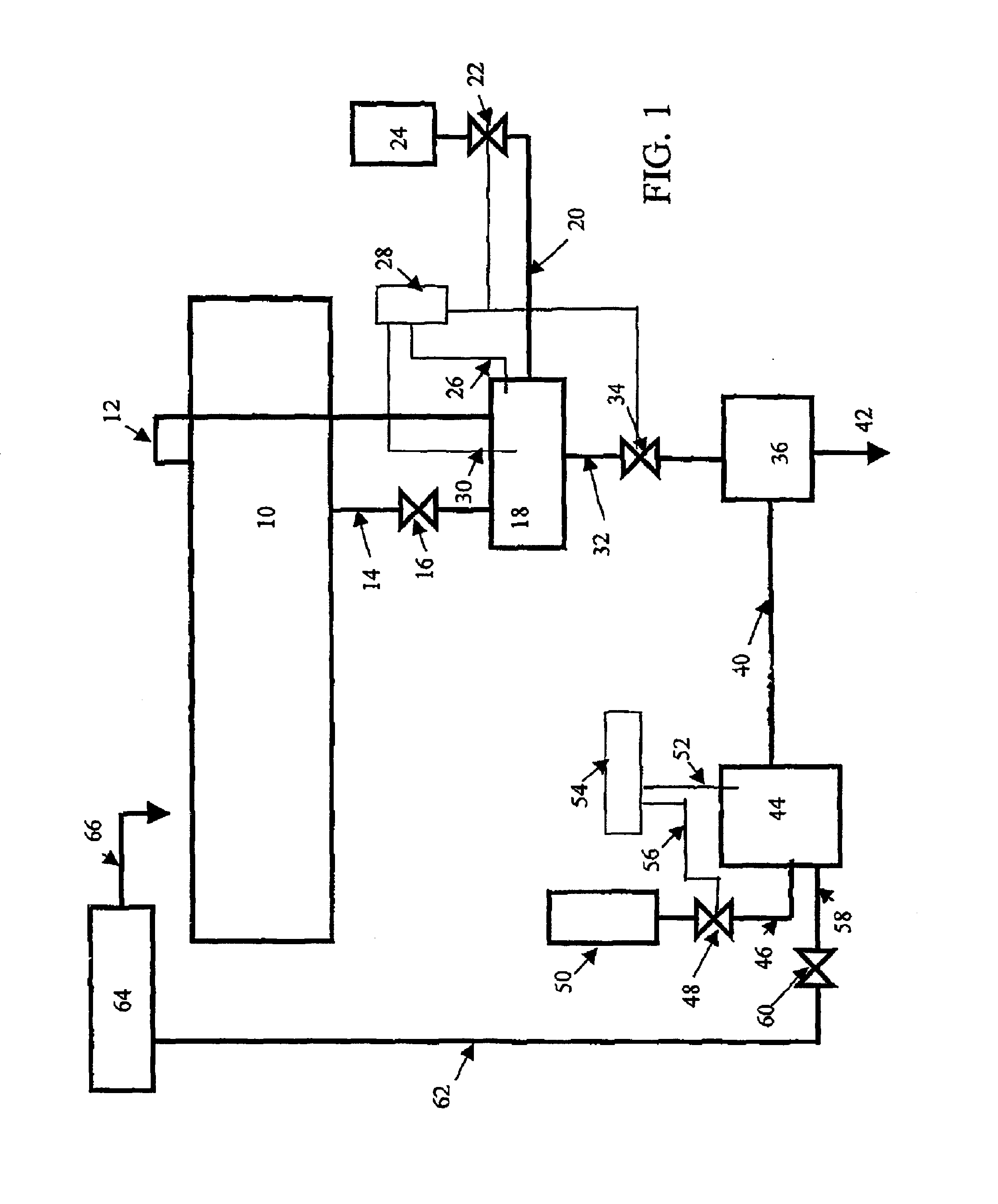Method and apparatus for refreshment and reuse of loaded developer
a technology of developer and developer, applied in the field of lithographic printing, can solve the problems of scum on the developed printing plate and the components of the processor, and achieve the effect of reducing the number of scum on the developed printing plate and the processing
- Summary
- Abstract
- Description
- Claims
- Application Information
AI Technical Summary
Benefits of technology
Problems solved by technology
Method used
Image
Examples
example 1
Five loaded developers were prepared as indicated in Table 1.
TABLE 1DeveloperCoating weightDeveloper andLoadingNo.Precursor(g / m2)Replenisher Used(m2 / L)1Easyprint1.851142Easyprint1.902123Virage2.302104Easyprint2.051125Electra Excel1.50120
Concentrated hydrochloric acid was added dropwise at room temperature with stirring to 5 L of each of the loaded developers until the pH was about 10.5. After an additional 0.25 hr of stirring, the precipitate that formed was removed by either filtration or centrifugation. In each case, the processed developer was obtained as a clear, colorless solution.
The precipitate from each loaded developer was dried for about 24 hr in a forced air oven at about 45° C. and weighed. The solid content of each of the processed developers and the solid content of each of the corresponding fresh developers was determined with a LJ16 Mettler moisture analyzer. The results are shown in Table 2.
TABLE 2Solid ContentSolid ContentDeveloperWeight ofCoating Weightof Processe...
example 2
The example illustrates preparation of a refreshed developer. Potassium hydroxide (0.3 g) was dissolved in 10 kg of processed developer #1 produced in Example 1. 10 mL of the refreshed developer was diluted with 90 mL of deionized water and titrated with 0.5 N HCl using a Titrino DMS 716 (Metrohm). The alkali value (number of mL of acid to reach the first equivalence point) was 11.3 mL, which was identical with the value for developer 1.
example 3
The example illustrates preparation and use of a refreshed developer. The results show that refreshed developer can be used to develop printing plates based on novolac resins.
Easyprint™ positive-working printing plate precursors (Kodak Polychrome Graphics LLC) were cut to a size of 790×850 mm and exposed with 510 mJ / cm2 of radiation from a metal halide lamp (MH-Bruner, available from Sack) through a Foga square root of two test strip with an optical density range of 0.15 to 1.95.
The exposed printing plate precursors were developed in a Mercury processor as described above. During the test period, the exposed printing plate precursors were developed one after another at a rate of 140 plates per day for 25 days with 4 weekend interruptions. The activity of the refreshed developer was monitored by titration with 0.5 N HCl as described above. Throughout the run, 175 L of overflow of used developer was collected, which corresponds to 50 mL / m2 of developed plate.
During the test period, th...
PUM
| Property | Measurement | Unit |
|---|---|---|
| temperature | aaaaa | aaaaa |
| temperature | aaaaa | aaaaa |
| temperature | aaaaa | aaaaa |
Abstract
Description
Claims
Application Information
 Login to View More
Login to View More - R&D
- Intellectual Property
- Life Sciences
- Materials
- Tech Scout
- Unparalleled Data Quality
- Higher Quality Content
- 60% Fewer Hallucinations
Browse by: Latest US Patents, China's latest patents, Technical Efficacy Thesaurus, Application Domain, Technology Topic, Popular Technical Reports.
© 2025 PatSnap. All rights reserved.Legal|Privacy policy|Modern Slavery Act Transparency Statement|Sitemap|About US| Contact US: help@patsnap.com


